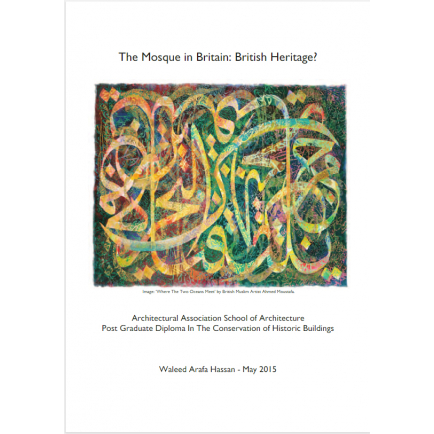
The Mosque in Britain: British Heritage?
Date Added
12/02/2019
Content Type
Documentary
Link to Content
Subject Area
Architecture
Author
Waleed Arafa
Year of Publication
2015
@dar_arafa_architecture
@dararafa
@dar_arafa
Description
This thesis is primarily dedicated to evaluating British mosques and their standing within British Heritage; past, present and their potential in the future. I am arguing that the Mosque in Britain is misunderstood, under-studied, under-valued and under-threat. This situation is contrary to that of any building typology celebrated as British Heritage.
- Historical roots and developments of mosques in Britain.
- Mosque architecture as a question. To be answered from the Islamic point of view that no mosque, regardless of its location would be considered to be ‘Islamic’ unless it is fully integrated with its surroundings both in time and loci. Therefore, in this case, no mosque is Islamic unless it is considered to be truly British.
- The opportunities of the Mosque in Britain, not only in contributing to British Heritage, but rethinking mosque architecture worldwide





